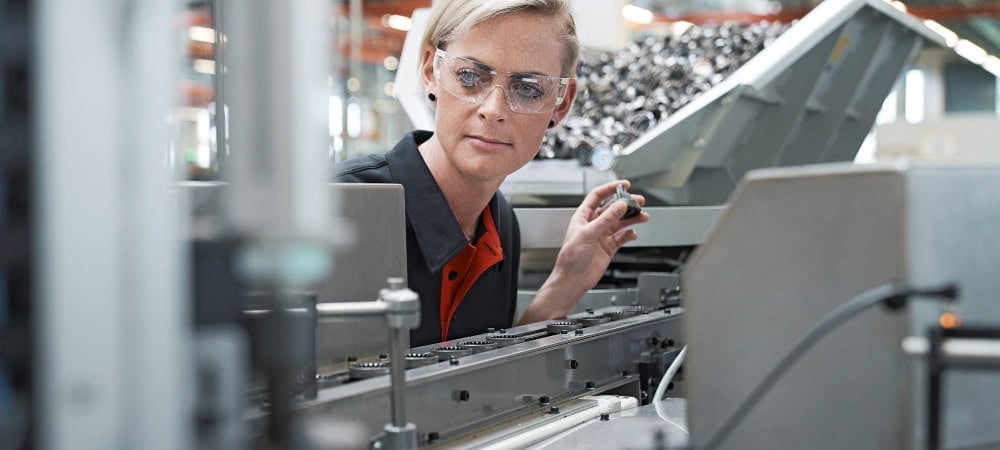Swiss technology company SFS Group implements digital future platform for 2025 and beyond


The globally operating Swiss industrial company SFS Group, based in Heerbrugg in the canton of St. Gallen, had set itself the goal of implementing a completely new digital global solution platform in 2025 based on S/4 Hana. This involved designing digital end-2-end processes, harmonizing company data and consolidating existing systems. The challenge was to reduce the complexity of the company's processes, which had arisen over the past twenty years due to in-house developments and other factors, and to standardize processes worldwide. With a selective transformation approach, SFS took the opportunity to switch technology from ECC 6.0 to S/4 without sacrificing profitable innovations. The two existing SAP ERP system lines were merged.
SFS Group
The SFS Group is a global leader in precision components and assemblies, mechanical fastening systems, quality tools and logistics systems. SFS comprises the three segments Engineered Components, Fastening Systems and Distribution and Logistics. Its customers come from the automotive, construction, industrial manufacturing, aerospace, electronics and medical technology sectors. SFS is present in 35 countries worldwide with 140 sales and production sites and generated sales of 2.74 billion Swiss francs in the financial year 2022 with around 13,500 employees.
Standardization of Group processes
In recent years, the SFS Group has become significantly larger, more international and therefore more heterogeneous in its processes. Those responsible have therefore set themselves strategic goals to adapt the organization and processes to the new circumstances and increase competitiveness. These include Simplifying and standardizing business processes, increasing automation and ensuring process quality, combined with a significant increase in efficiency. It was clear to SFS that the R/3 system line would only be supported by SAP for a few more years and that the transformation to S/4 Hana should be used to set the course. The decision was quickly made to merge the two existing ERP system lines into a new, global system.
"We wanted to switch to the new SAP technology as quickly as possible and implement the latest system line in order to take advantage of opportunities for future innovations at an early stage. We also noticed that the suitable consulting firms on the market would not have had sufficient resources available at a later date," explains Reto Buchli, Head of Corporate IT at SFS.
SFS opted for the Selective Process and Data Transition. The decision for a selective approach had matured with the result of the SAP baseline analysis, a type of transformation study. SFS therefore opted for a hybrid approach. "We enter the process world at a very early stage and determine the future," says Buchli, outlining the procedure.
The project team went into prototype design at an early stage in order to have something tangible as quickly as possible. This involved building a solution in the system at an early stage, verifying it and developing a template from it. The approach combines aspects of classic waterfall project work with those of the agile working world. The preparation, proto-design, template design and template pilot roll-out phases form the basic grid.
Template design for short sprints
The template design phase was certainly the most agile in the project. The project team focused on three-week sprints and developed the future Group template. One goal was to design group-wide processes.
Early prototypes made it possible to visualize, test and communicate ideas quickly and cost-effectively. Mapping the data for data migration was also important in this phase. Data mapping is a critical aspect that ensures data quality. If done incorrectly, data can become unusable when transferred to the target system. Careful data mapping is therefore crucial for the optimal use of data during transformations.
SFS has already successfully completed the first stages. The go-live of the system for the Central Finance division as well as for the finance departments of a further 28 companies in a total of 27 countries and the Distribution and Logistics Switzerland division went smoothly. All core processes continued to run and customers could continue to be supplied without any restrictions.
"S/4 Hana is a key project - and a successful go-live was essential for the Distribution and Logistics Switzerland division so that we can ensure delivery capability for our customers. The relevance and therefore the pressure were therefore very high. Thanks to the great commitment of everyone involved in the project, the go-live went practically without a hitch," says Iso Raunjak, member of the Group Executive Board.
In the next phase, the logistics processes of all previous SAP locations (19 countries) will be converted to S/4. For the project team, this also means migrating and validating 1.4 billion data records within a very short space of time.
"With this transformation, we are laying the technological foundation for the next 20 years. We will fully automate all of our processes and thereby increase our competitiveness. The aim is to establish lean, agile and future-proof business processes," emphasizes Head of IT Buchli.
"Another important point to mention is that S/4 Hana opens up new opportunities for our employees to work with high and rapid data availability and modern user interfaces. This is an important added value that will make SFS more efficient and significantly advance it," explains Buchli.
SFS has also succeeded in moving closer to the SAP standard. In-house programming in IT has been reduced by 30 percent, which will lead to significantly lower time and maintenance costs in the future. The selective migration approach has made the organizational change much easier without losing the complete reporting history.
The transfer of customer and supplier master data is a special step in the S/4 migration. Special attention was therefore paid to the topic of business partners, as SFS has a total of 185,000 customers and suppliers that needed to be migrated. What lessons did the SFS managers learn? "It's always about having the right people in the project, especially to the extent that you need them for success. It is often the case that the business is reluctant to give up precisely these experts. They are needed in day-to-day business. So it is important to hold talks in good time to be able to remove these people from their environment for a certain period of time," explains project manager Roland Tüscher.
Success with change management
In the past, SFS had focused its communication on the project primarily on managers and IT contacts. This time, those responsible realized very early on that the business transformation needed close communication support due to the size of the project. After discussions with cbs, it was therefore decided to form a dedicated group to explicitly take care of communication.
"This time, we wanted to integrate change management into the project comprehensively and at an early stage. That was the basis for the success of the project. It was therefore particularly important to get all employees "on board" at an early stage. A special change management group took care of this. From my perspective, I can only say that I was very happy not to have to worry about the communication aspect as well," emphasizes Tüscher.
SFS and cbs act as equals at all times. "We have an extremely cooperative, appreciative, but also pragmatic working relationship. This is an aspect that we already felt during the selection phase, because direct communication is very important to us. We can only achieve our goals together and must constantly be able to react to new, tricky situations. And it's important to have a common understanding," explains Tüscher.
Click here for the partner entry:








2 comments
E3-Magazin
Vielen Dank, Herr Wunderlich, für Ihren Kommentar!
Albert Wunderlich
Selektiver Ansatz
Hervorragend! Wir sind sehr stolz auf diese Erfolgsgeschichte. Der selektive Ansatz gibt unseren Kunden die Flexibilität, ihre Transformationsprogramme auf ihre individuellen Bedürfnisse hin zu optimieren.
Der selektive Ansatz kombiniert die Vorteile von Greenfield und Brownfield Transformationsansätzen.
In der Vorbereitungsphase definieren wir wertorientiert den Scope der Transformation. Was muss, soll und kann im Operating Model, in den Prozessen, Daten und Applikationen verbessert und verändert werden, was muss, soll und kann unverändert bleiben. Unser Change Management Ansatz bewertet dabei die Organisation. Wie viel Veränderung kann die Organisation leisten? Damit maximieren wir wertorientiert die „Länge“ und „Breite“ des Transformationsprogramms – Mehrwerte für die gesamte Organisation schnell verfügbar machen; time to value.
Mit unserer Migrationssoftware, dem cbs Enterprise Transformer, sind wir in der Lage, diesen selektiven Transformationsbereich aus Innovationen, Verbesserungen, bewährten Assets zu migrieren – Sweet Spot Selective Data Transition.
Wir sind der festen Überzeugung, dass jeder SAP Kunde, der sich auf eine S/4HANA Implementierung vorbereitet, sich des selektiven Ansatzes bewusst sein muss. Dieser muss in die Vorstudie einfließen. Die Leitplanken für die S/4HANA Implementierung werden in der Vorbereitung bzw. „S4 Vorstudie“ gesetzt und die Organisation darauf ausgerichtet.
Bei dem selektiven Ansatz handelt es sich um einen wertorientierten Managementansatz. Diesen Aspekt zu liefern und in eine Vorstudie zu integrieren, kann jedes renommierte Beratungshaus leisten.
Darüber hinaus gibt es auch eine Handvoll Migrationsexperten, die in der Lage sind, eine S/4HANA Implementierung nach dem selektiven Ansatz durchzuführen.
Am Ende des Tages steht der Kunde und seine individuelle Situation im Mittelpunkt. Der selektive Ansatz erweitert das Leistungsspektrum von reinen Green- und Brownfield-Ansätzen und gibt der Technologie den Aspekt zurück, der ihr zugeschrieben wird: Enabler für das Business zu sein.